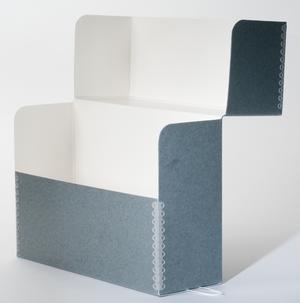- Contact Us
- Emergency Information
- Facility Rental
- Jobs
- Site Map
- Site Policies
- Web Accessibility
- Web Privacy
- © Harry Ransom Center 2025

SIGNATURES
Identified individuals are represented by a biographical sketch, a list of connections to other signatures, and, in most cases, an artifact from the Ransom Centers collections. Help us identify more signatures by submitting your suggested identification.
X
X
THE DOOR
 Location on door: front, panel 1
Location on door: front, panel 1
ORSON LOWELL
Trained at the Art Institute of Chicago, Orson Lowell (1871-1956) was a prominent artist, illustrator, and cartoonist lauded for his ability to capture the fashions and attitudes of the moment. One early book illustrated by Lowell, Ralph Henry Barbour and L. H. Bickford's Phyllis in Bohemia (1897), satirizes turn-of-the-century Greenwich Village. In 1907, Lowell obtained a contract with Life and produced cartoons for the magazine until 1915. Lowell was a member of the Society of Illustrators, and over the course of his career his drawings appeared in Judge, Puck, McClure's, Scribner's, Collier's, Century, American Boy, and American Girl and numerous books for both children and adults. Though he had close ties to the literary and artistic communities of Greenwich Village, Lowell lived most of his career in nearby New Rochelle, New York, home to a number of artists including Norman Rockwell and illustrator Joseph Christian Leyendecker.

The front cover and selected pages in James Lane Allen's The Choir Invisible (New York: The Macmillan Company, 1898), with manuscript marginal commentary by illustrator Orson Lowell
Lowell's marginal comments regarding his own drawings for James Lane Allen's The Choir Invisible (1898) reveal the intensely thoughtful and exacting manner in which he approached his work as an illustrator. As his handwritten note to Allen at the end of this copy explains, Lowell produced the book's sixty drawings in "10 weeks of the hottest weather New York ever saw."

